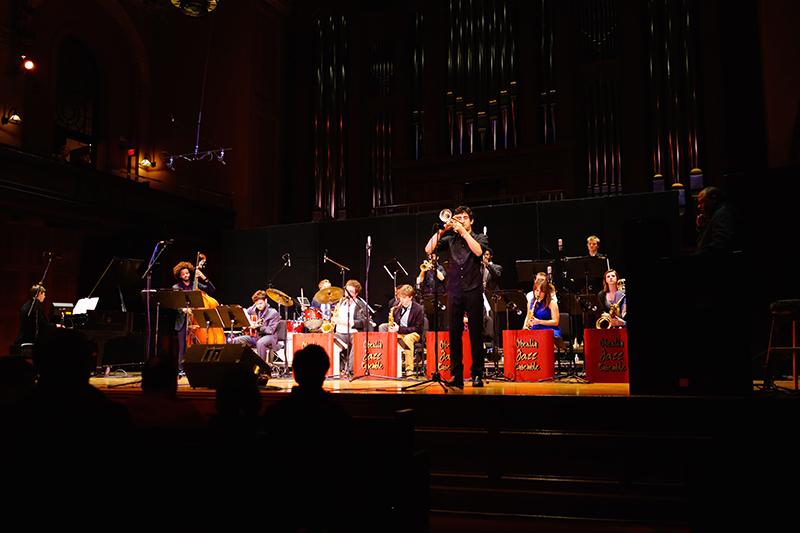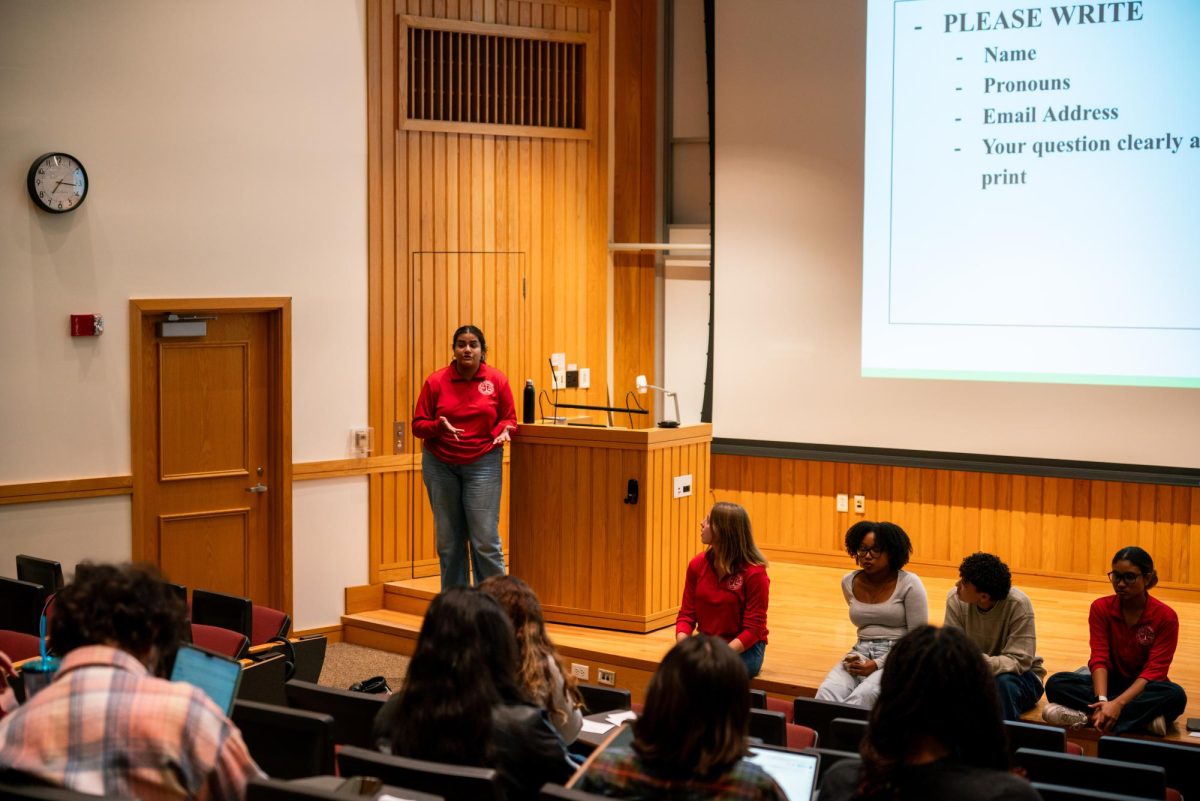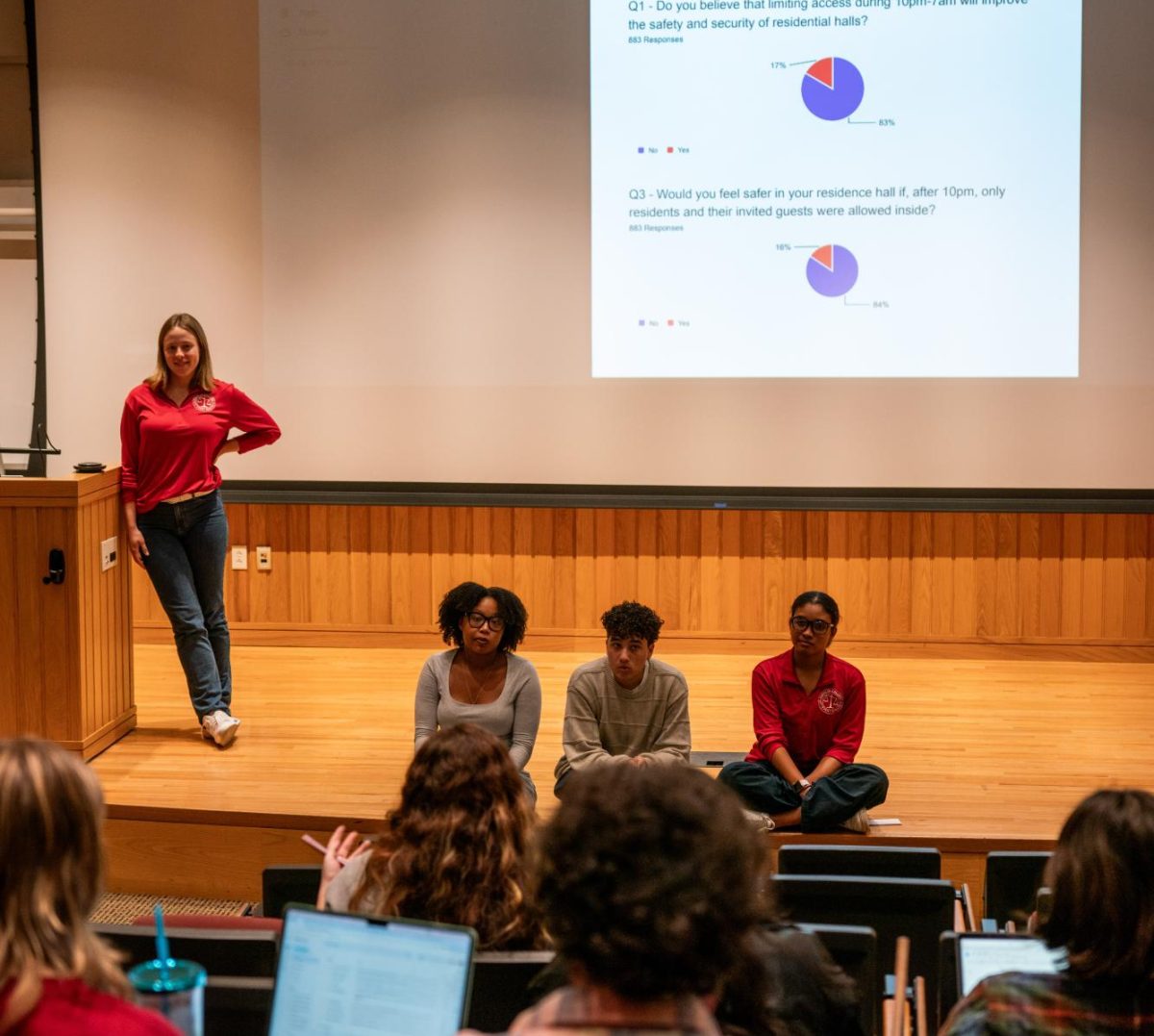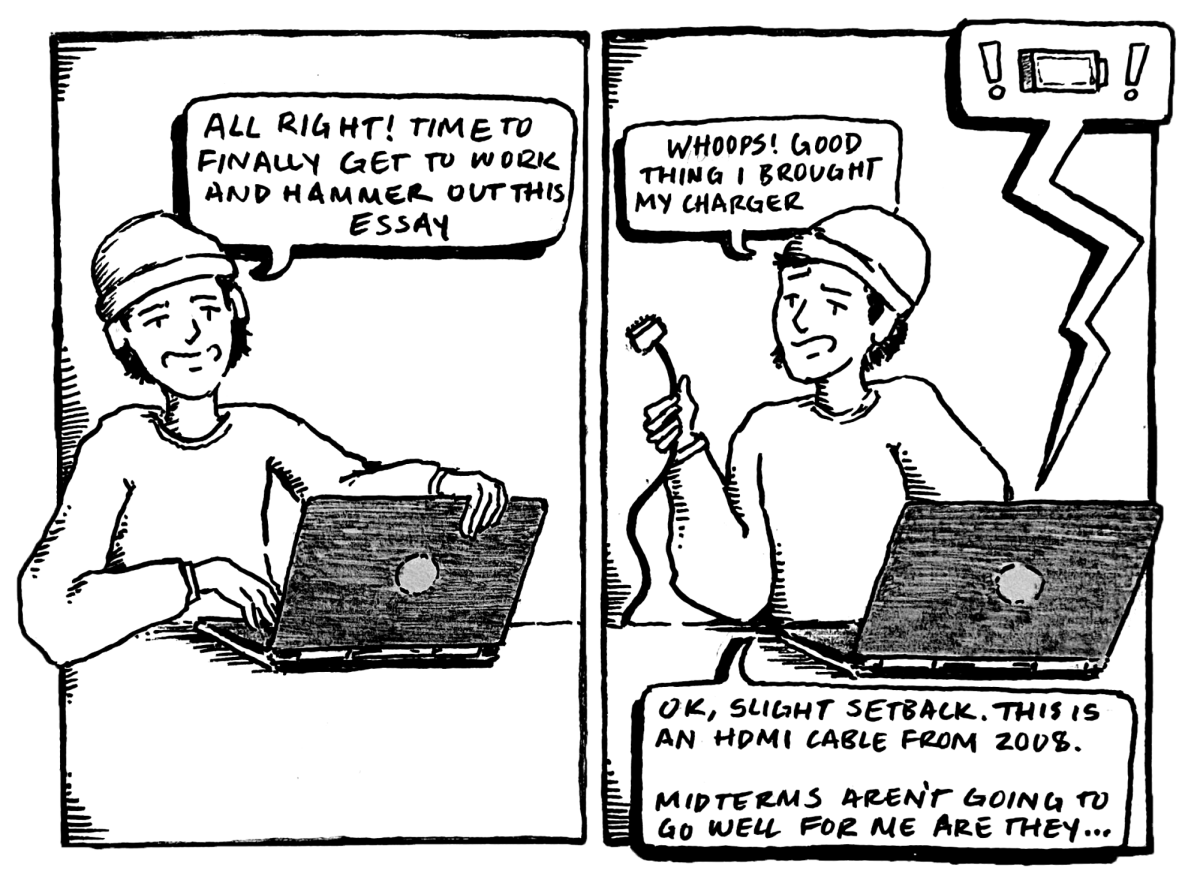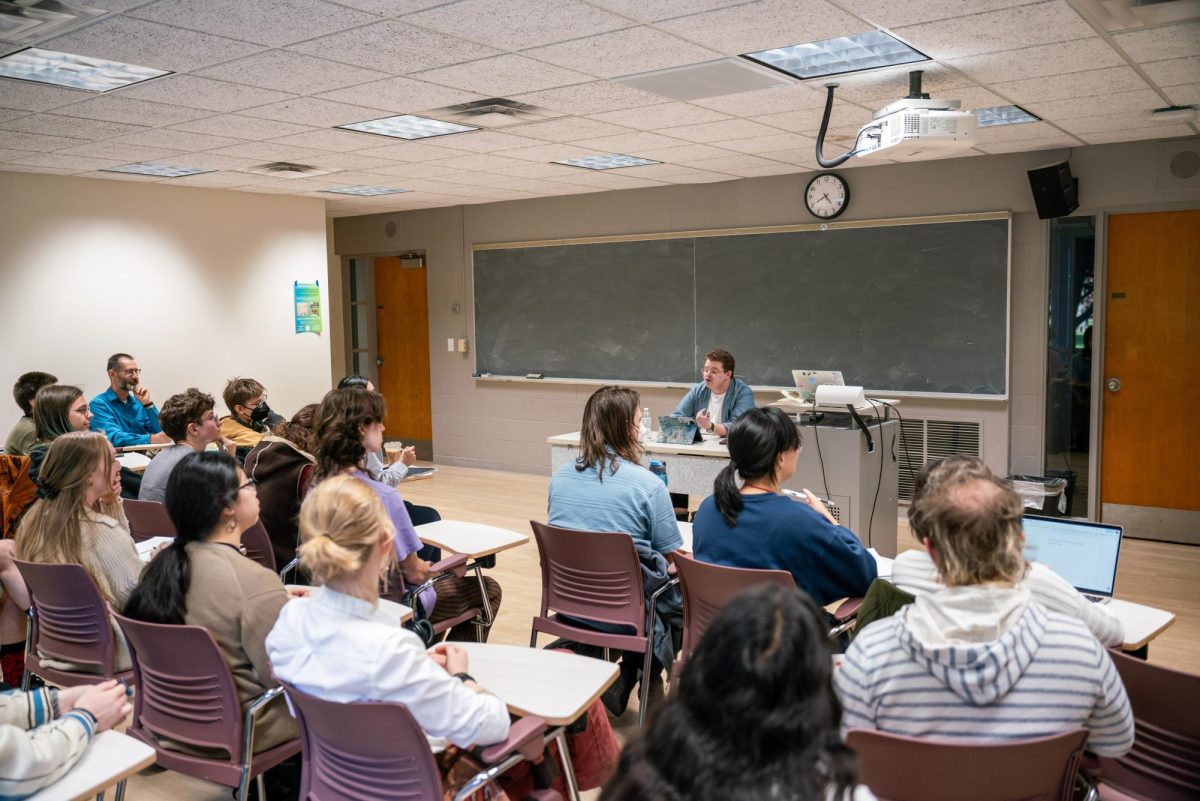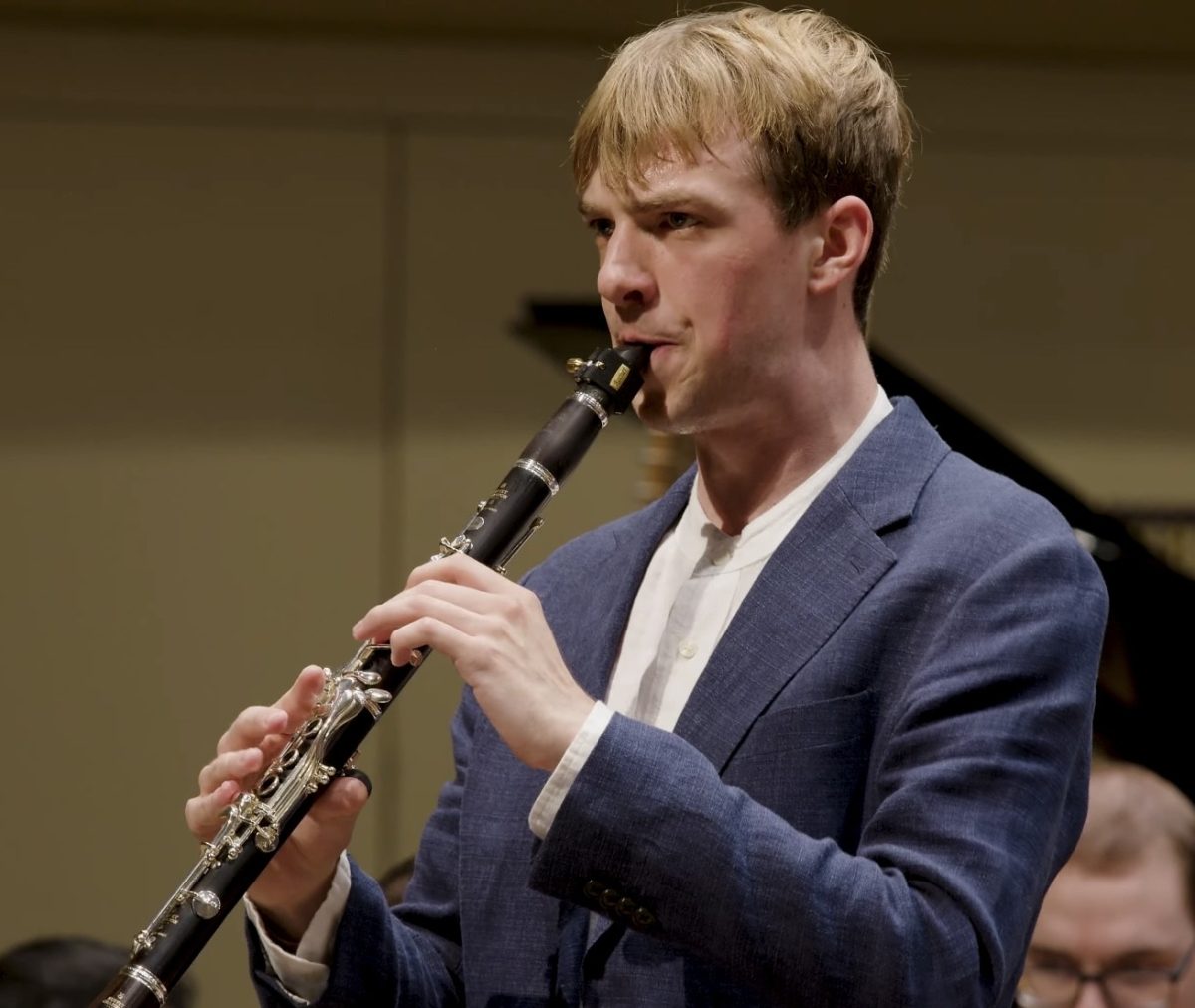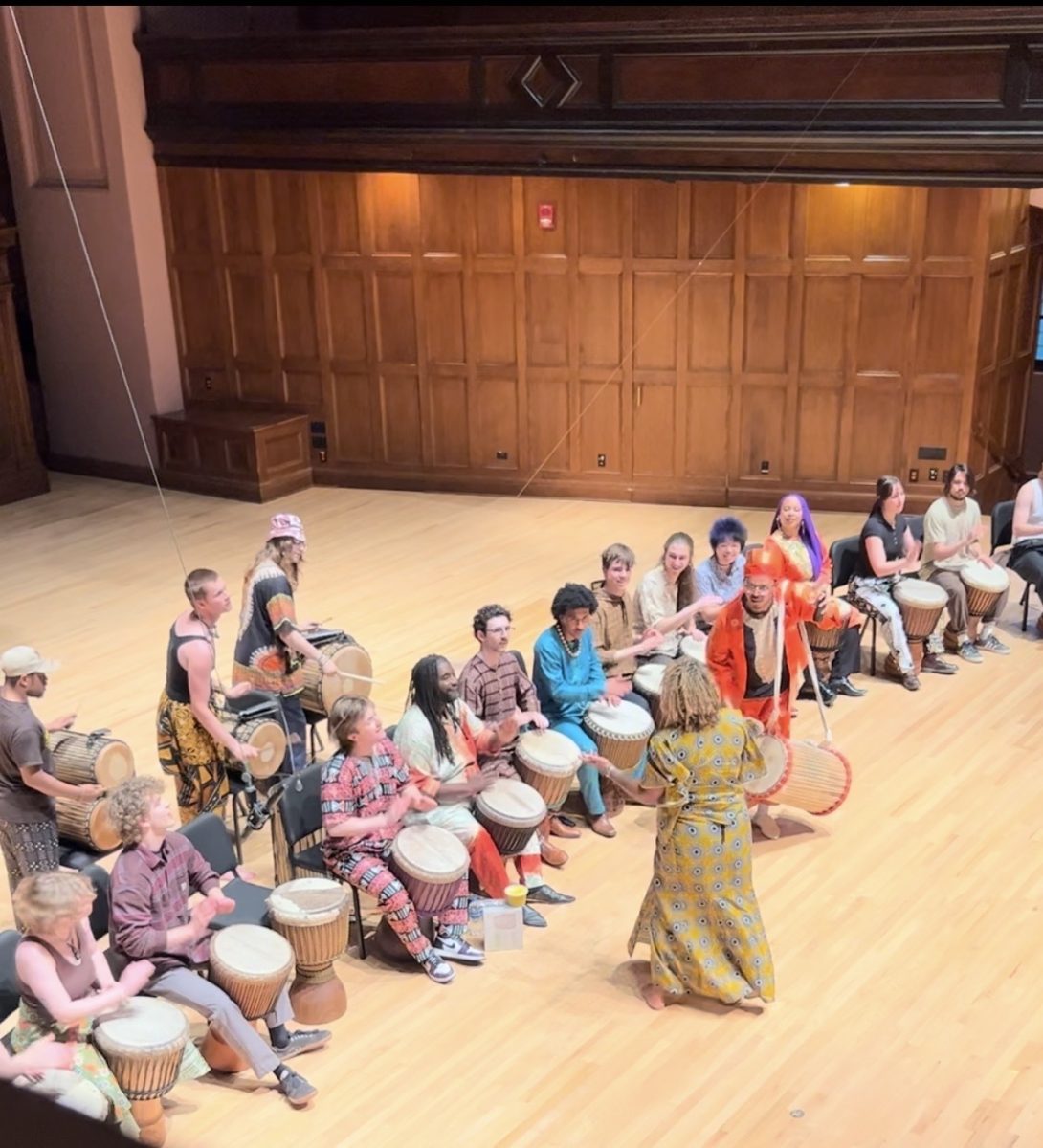Fall OJE Concert Features Virtuosic, Lively Soloists
Trumpet player and College junior Simon Gilbert performs a solo during the Oberlin Jazz Ensemble’s first performance of the year. The concert took place in Finney Chapel on Saturday, Nov. 8 and featured an array of strong solos and cohesive ensemble work.
November 14, 2014
The Oberlin Jazz Ensemble’s first concert of the year opened with a duel. Trombonist and Conservatory senior Lawrence Galloway and trumpeter and College junior Simon Gilbert stunned audience members with a fierce musical battle at the finale of Ben Patterson’s “No, I Don’t Fly Planes,” their notes screaming out into the resonant acoustics of Finney Chapel. Indeed, Saturday’s concert featured strident individual solos and cohesive ensemble playing that thrilled students and parents alike.
The next song on the program, “Mean What You Say” by Thad Jones, was much softer, lazier and looser, contrasting pleasantly with the opening number. Double-degree junior Jack Laskey began the piece with a relaxed piano melody reminiscent of a stroll in the park on a Sunday afternoon. The tune transformed into a much livelier jaunt when the horns entered, providing a rhythmic “oomph” that animated the music’s gentle melody.
Later in the concert, OJE performed “The Arboretum,” a composition by Trumpet major and double-degree junior Zach Resnick. The piece featured a bassline that provided a solid rhythmic pace, giving the work a sense of depth and a distinct groove. Double degree fifth-year Ellington Scott’s virtuosic percussion solo at the end of the piece, while technically dazzling, failed to fit with the relaxed atmosphere of the rest of the music. Dennis Reynolds, the ensemble’s director, joked about the title of the Oberlin landmark. “[The students] had to explain [the title] to me,” he said. “They said, ‘You live by one of those,’ and I said, ‘Really?’”
Reynolds went on to describe the next piece, Oliver Nelson’s “Blues and the Abstract Truth,” as “an obscure piece of music.” The song starts out as a nervous tic that builds on itself until the initial tune spills over into a smoother, more relaxed melody. These two textures continue to alternate, creating an atmospheric tension within the piece. Conservatory junior Ana Nelson performed her alto saxophone solo with passionate abandon. Her expressive musicality alternated between large intervallic jumps and lyrical, flowing lines that matched the fluctuating style of the work.
“Whisper Not” featured a much darker mood than the rest of the program. The song’s composer, Benny Golson, boasted that he wrote the piece in only 20 minutes; nevertheless, the work has become a jazz standard thanks to its quirky charm. A quiet and secretive melody in the beginning evoked the image of someone sneaking around street corners late at night, perhaps loitering against a wall while furtively shifting their eyes at passersby. In this section, the members of the ensemble demonstrated their ability to play softly, displaying an accomplished sense of dynamic balance difficult to achieve in larger ensembles. Toward the end of the piece, however, the music shifted in an almost humorous direction, with a bugle call-like trumpet melody that one might imagine as the marching of police boots or some authoritative force intruding on the stealthy character’s movements.
According to Reynolds, Buck Clayton’s “Avenue C” isn’t often performed due to its age; the piece is celebrating its 70th birthday this year. While Finney Chapel seemed like a static venue for this foot-tapping tune, the music had some audience members bobbing their heads or swaying in their seats. Soloists and ensemble members interacted much more with each other than in prior selections, creating a layered and nuanced sound. “Avenue C” would have provided an enjoyable, lively conclusion to the performance, but Reynolds chose instead to end with “Slide’s Derangement” by Slide Hampton, which felt somewhat flat and empty after “Avenue C”’s jubilant, feel-good melody.


